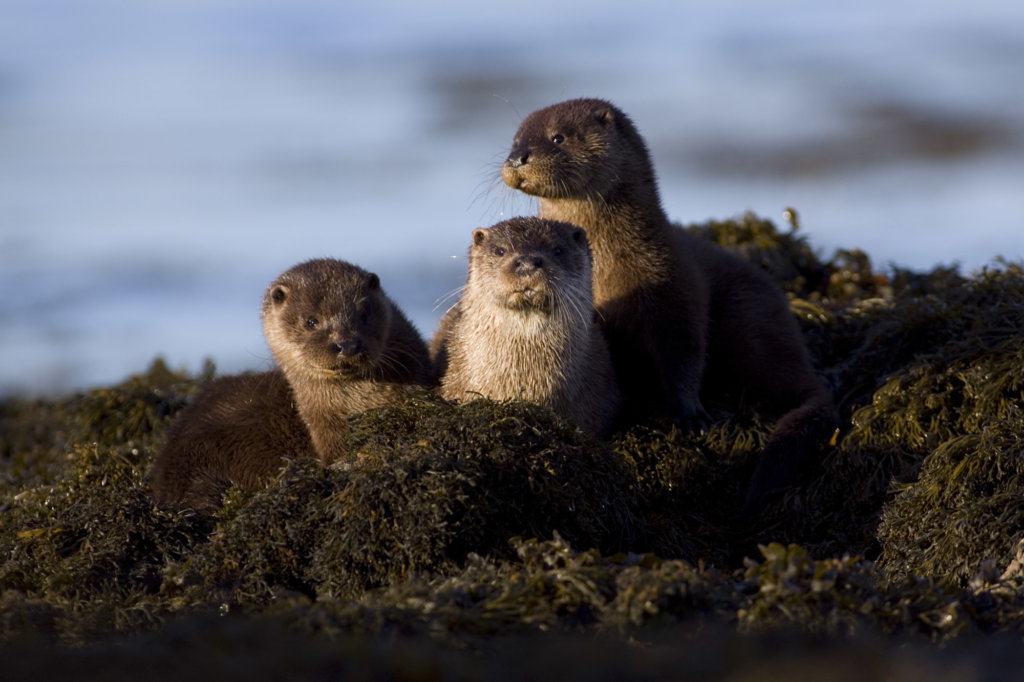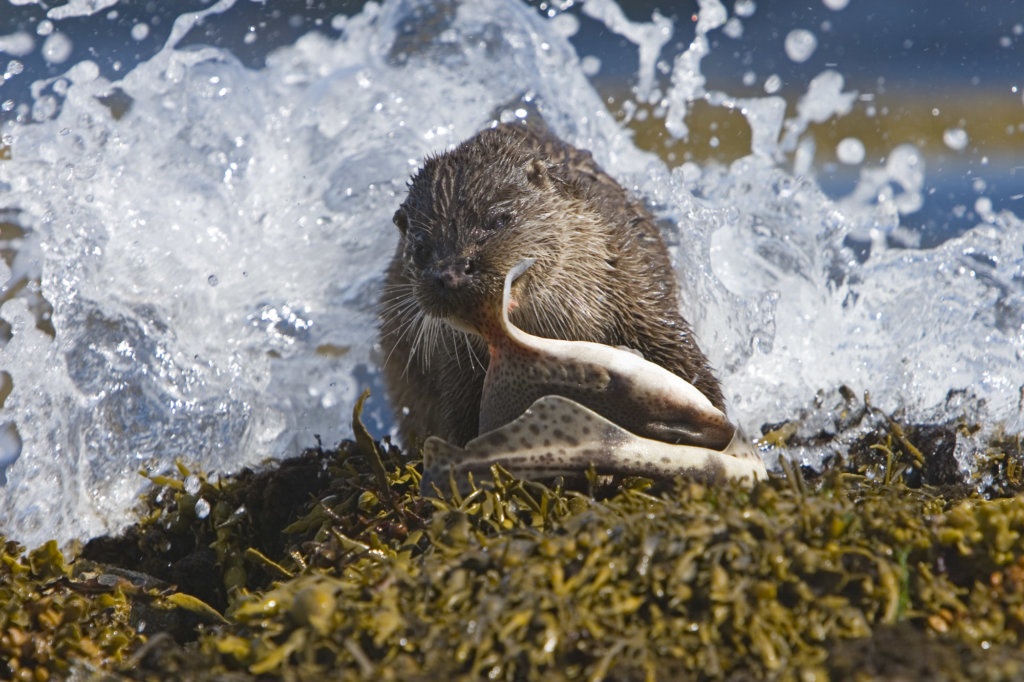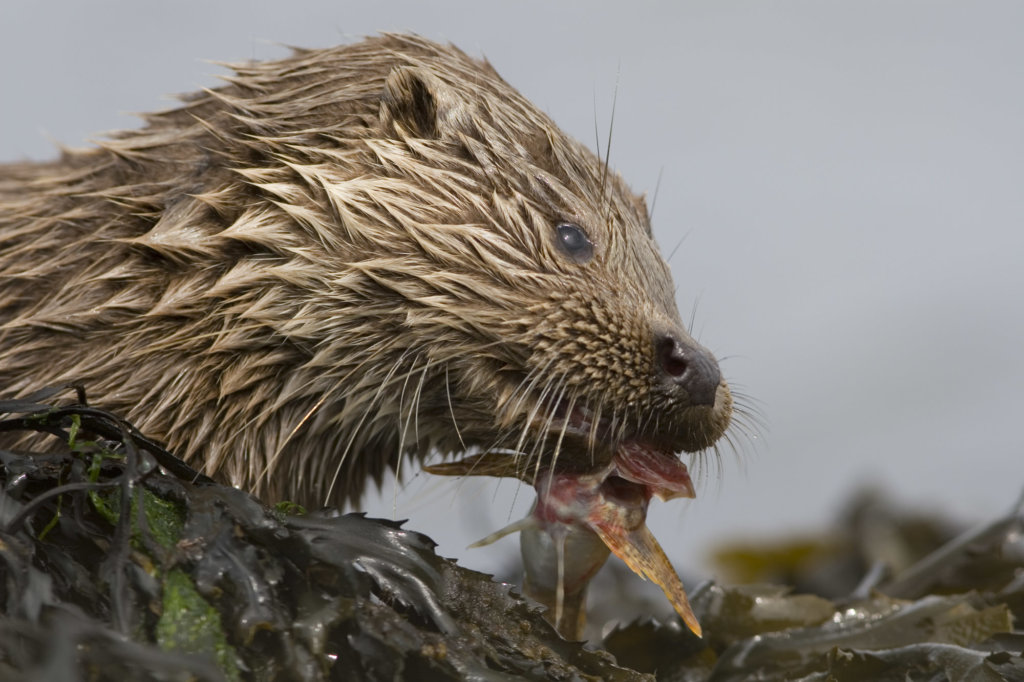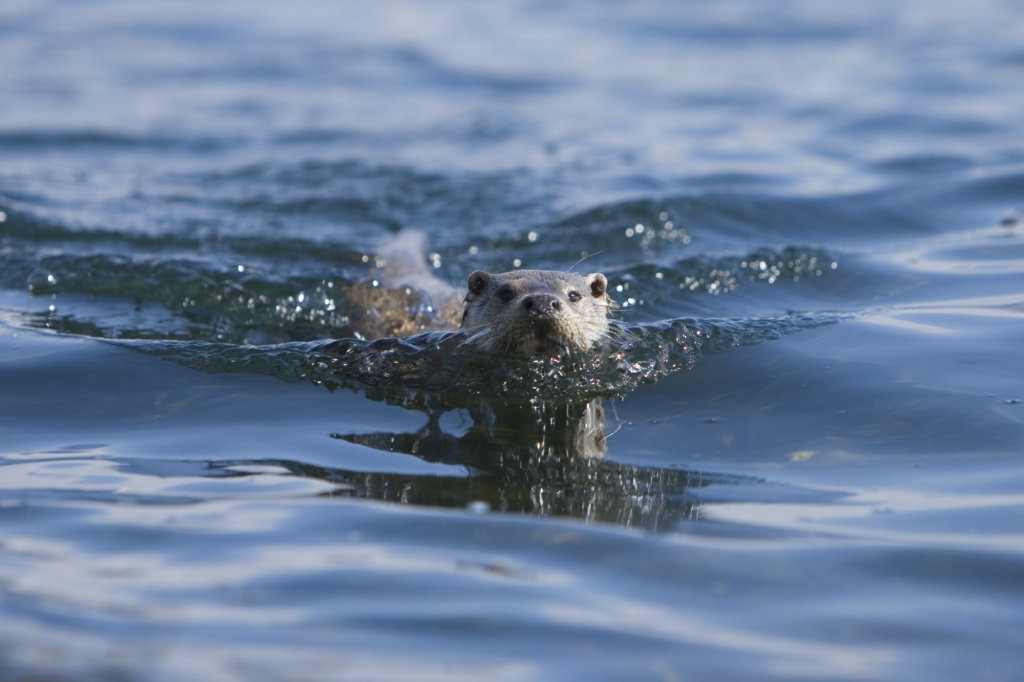Our guide for where, when and how to spot the elusive Eurasian Otter on Mull.
What is a Mull Otter?
Mull otters find their prey mostly in the sea, but they are not sea otters, which is a different species found on the Pacific coast. The Mull otter is the Eurasian otter, Lutra lutra, a member of the Mustelid family which also includes Badgers, Mink and Pine Marten. The Eurasian Otter is the only species of otter in the UK, occupying sea, rivers and lakes across the country. An adult otter will be about 1-1.2 metres long from tip of the nose to end of the tail.

Where can you spot otters on Mull?
The good news is: just about everywhere! Just about every mile of Mull’s coastline could be home to otters.
Look for them where you see seaweed and rocks, as this is where they tend to find their prey. They can sometimes be spotted on the rocks, feeding or grooming, or in amongst the seaweed on the shoreline, resting.
Their seaweed-coloured coats camouflage them, so it is possible to walk past a snoozing otter even when it is only a short distance away.
We would recommend taking a wildlife tour with one of the many excellent wildlife guides on Mull. You will almost certainly see an otter, while learning how to watch it without disturbance to the animal.

When can you see otters on Mull?
An otter can be seen at any time of day as they fish for food throughout the day and night. Some say that you have a better chance of spotting them a few hours either side of low tide or at dawn and dusk.
When the sea is calm, it may be easier to spot an otter swimming on the surface while fishing. But however wild the weather, otters must try to look for food, so it is worth keeping an eye out on rough days, too.

How do you go about otter spotting on Mull?
When you are out and about along the coast, on foot or in a car, keep a look out for movement in the water. Otters tend to be seen close to shore. It is easy to be confused by a glimpse of a bird diving, or a seal. You will know it is an otter if it remains active, diving for an average of 20 seconds, only pausing to eat its food. A diving otter typically shows the curve of its back then a flick of its tail.
When you spot an otter, stay quiet and still. You will disturb the otter if you try to get too close. Otters have excellent senses of sight, sound, and smell. If they detect you, they will quickly disappear. It helps to wear dull clothing and stay low, so your silhouette is not seen. Stay downwind of the otter to prevent it from noticing your smell. When you need to move, wait until the otter dives for food.
It’s a good idea to stay in one place. Let the otter come to you. It may not notice you and could approach by itself!

What not to do when otter watching on Mull
It’s very important to avoid any actions or noise that will disturb the otter as it goes about its natural behaviour. In particular don’t get too close so that they feel they have to escape which can cause harm, especially if they are with young. Don’t follow them if they run away from you. It’s crucial to keep a safe distance, using binoculars or a telescope to view them and a long lens to photograph them. There are few things more delightful than being able to view an otter, relaxed in its natural habitat.
For more information, please visit the Mull Otter Group.